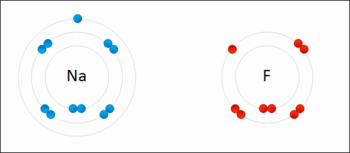Balancing of Chemical Equation of Redox Reactions using Oxidation Number

Balancing of chemical equation means making the number of atoms of each elements equal on both sides of the equation.
In the last post Balacing Chemical Reactions, I told how to balance simple reaction but in this post we will see how to balance redox reactions and more complex reactions.
According to the ‘Law of Conservation of Mass’, each chemical equation must be arithmetically balanced, i.e., the number of atoms of each elements on both sides of the chemical equation must be equal.
In earlier post we used hit and trial and partial equation methods. But in this post we will use :-
- Oxidation Number Method
- Half Equation Method or Ion-Electron Method - We will talk about this in next post.
1. Oxidation Number Method
The various steps involved in the balancing of redox equation by oxidation number methods are :-
-
Write the skeleton equation of all the reactants and products of the reaction. If you don’t know what is skeleton reaction please to my last post
-
Indicate the oxidation number of each element above its symbol and identify the elements which undergoa change in the oxidation number(O.N.).
-
Calculate the increase or decrease in oxidation number per atom and identifythe oxidising agents and reducing agents. If more than one atom of the same element is involved, find out the total increase or decrease in O.N. by multiplying this increase or decrease in O.N. per atom by the number of atoms undergoing change.
-
Multiply the formulae of the oxidising and the reducing agents by suitable integers so as to equalise the total increase or decrease in oxidation number as calculated in step 3.
-
Balance all atoms other than H(hydrogen) and O(oxygen).
-
Finally balance H and O atoms by adding molecules using hit and trial method.
-
In case of ionic reaction,
- For acidic medium
- First balance O atoms by adding molecules to whatever side deficient in O atoms and then balance H atoms by adding ions to whatever side deficient in H atoms.
- For basic medium
- First balance O atoms by adding molecules to whatever side deficient in O atoms. The H atoms are then balanced by adding molecules equal in number to the deficiency of H atoms and an equal number of ions are added to the opposite side of the equation. Remove the duplication, if any.
- For acidic medium
Illustrations
Example 1 Balance the equation,
Solution
- Find out the elements which undergo a change in oxidation number(O.N.)
- Here, O.N. of Mg increases from 0 in Mg metal to +2 in and that of N decreases from +5 in to +1 in
- Find out the total increase and decrease in O.N.
- Since there is only one Mg atom on either side of Eq. (i), therefore, total increase in O.N. of Mg is 2. Further, since there are two N atoms in on R.H.S. and only one in on L.H.S. of Eq.(i), therefore, multiply on L.H.S. of Eq.(i) by 2 and thus the total decrease in O.N. of N is .
- Balance increase/decrease in O.N.
- Since the total increase in O.N. is 2 and decrease is 8, therefore, multiply Mg on the L.H.S. of Eq.(i) by 4
- Combining steps 2 and 3, we have,
- Balance all atoms other than O and H.
- To balance Mg on either side of Eq(ii), multiply by 4, we have,
- To balance Mg on either side of Eq(ii), multiply by 4, we have,
Now, there are 10 nitrogen atoms on R.H.S. of Eq(iii) and only 2 on L.H.S., therefore, to balance N-atoms, change the coefficient of form 2 and 10 on L.H.S. of Eq(iii), we have,
- Balance O and H atoms by hit and trial method.
- Finally balanced equation
- Finally balanced equation
 Never miss a story from us, subscribe to our newsletter
Never miss a story from us, subscribe to our newsletter